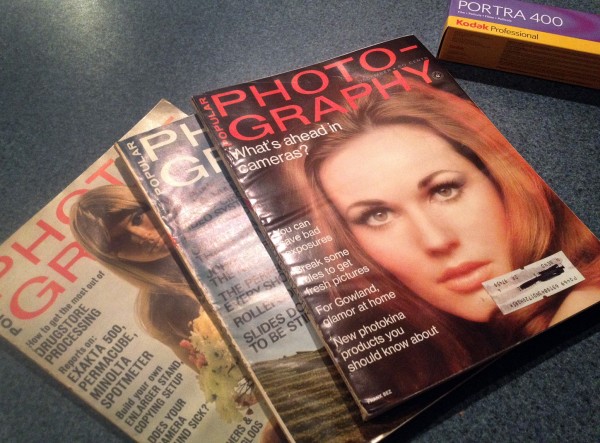
by Gavin Seim: (rev 05/13)
It was Spring of 1968. Motor Trend had just crowned the GTO car of the year, Eddie Adams just made one of the most iconic images in history and in a few months the Detroit Tigers would win the World Series. Pentax was telling us they made “fine photography easy.” and the Polaroid swinger was happily swinging off shelves. Topics ranged from the quality of drugstore printing to the latest spot meters. And yes, publishers knew that bare breasted woman sold photo magazines. Even then.
It was in the Spring of 2011 when I jumped back into film. I had cut my teeth on it back in the late 90’s. That was around the time the Unibomber was captured, scientists cloned sheep and Titanic sunk into theaters with a splash. As I grew, digital did too and soon took over the game. It was fresh, exciting and before long, even practical. Soon professionals everywhere were laying down their film for what were essentially 35mm SLR’s with a bit less detail. It was in some ways a downgrade, and yet digital does offer many advantages.
So I decided to go back and take film seriously. Loading it up for my travels to use it alongside digital. At first it was for the simple reason that a well scanned large format negative could produce vastly more detail than today’s digital. So I bought a classic 4×5 Linhoff and went to work. And it was indeed work, I picked one of the harder formats but it would turn out to be well worth it.

– 4×5 HP400 Film, Linhof Technika IV –
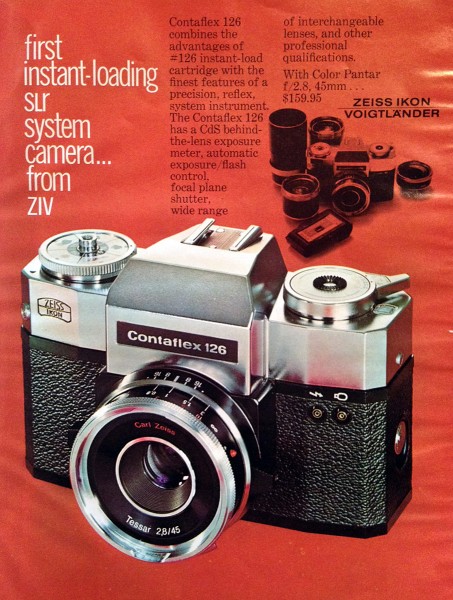
A few months earlier in ’68, the world saw Charlton Heston tell his primate overlord “Get your stinking paws off me, you damned dirty ape!” A classic was born, that would be somewhat tarnished by less impressive sequels. Meanwhile The soft focus filter was in vogue. Forty-four years later my wife would stand next to me in the living room looking at a cover portrait from a 1968 magazine and say. “It’s blurry.”
Back in the twenty-first century we’re making coffee and I grab my Olympus 35RC rangefinder to take a photo of my kids helping out on the kitchen counter. My daughter giggles adorably and I realize I forgot to wind the film. I react quickly before they move and release shutter. One frame and it’s back to lattes.
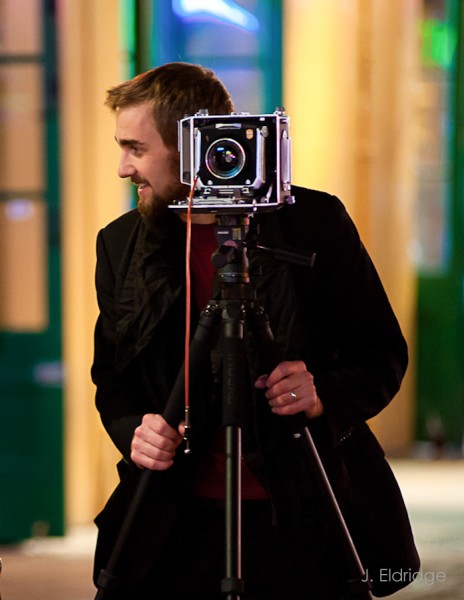
I was not the first to be out there rooting for film in this digital era. Many of the best Pictorialists never stopped using it. People like John Canlas, Ian Ruther and a few others had also been sharing their passion for silver for awhile. But I was not so into the romance, I just wanted the quality. People acted like I was a little crazy, but they still were a bit breathless when they saw my Linhoff Super Technika IV that came out around 1956. It started to become a part of my brand. Not just in my pictorials, but in my portrait work.
Next I started talking about film. I started talking about how I blended it with digital. Scanning, editing, printing. I have nothing against the traditional darkroom and I hope to build one when I have more space. But I’m a digital kid and I have a workflow there. There was a method to my madness. I needed to be able to get great images made and printed large in reasonable time for a reasonable cost.
Soon I had a Jobo ATL1000. A remarkable machine in which you load with a small batch of film and a very small amount chemicals and return about thirty minutes later to finished images, color or black and white. The next step was to scan on my V700 using a wet scanning attachment and then into Lightroom and other tools for the finished image. The result was amazing resolution from this 60’s era camera that has not changed much in half a century. I can get around 100-200MP of detail from 4×5 and a beautiful organic feel that digital somehow misses.
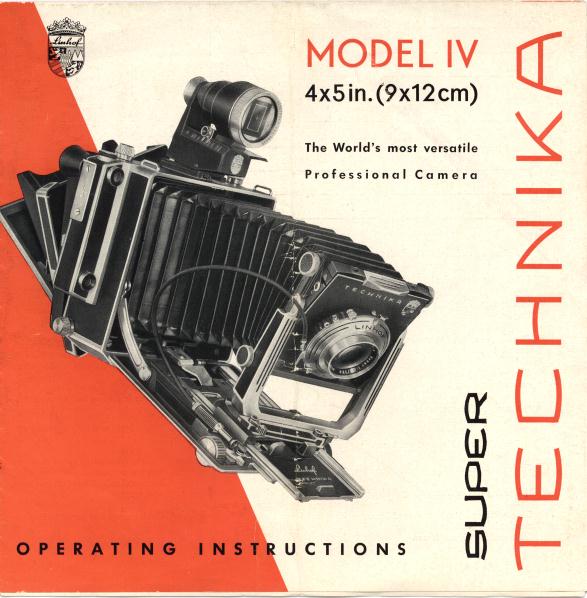
Time passed and I kept talking about film along with my digital techniques and ideas. I learned vastly more about light as film trained me to slow down, see better and look deeper. These ideas soon made it into my workshops and actually helped result in the EXposed series and then in the PHOTOGRAPHICS film.
I learned that camera has not changed much – Just what’s inside. And with fascinating journeys through books like 500 Cameras I saw the world embracing photographs. Even back in the early 1900’s when the the brownie released, the Wright brothers were just taking off and the first silent motion picture was shocking the world.
Along the way I kept hearing from people. Getting questions from others interested in film and people who Listened to Pro Photo Show. I had friends and colleagues whose interest had been sparked delve into large format, investing significantly into this beautiful medium.
For those who have only known digital, film is is a new frontier. For those who were filmies in the past, it starts with pulling out film cameras to reminisce. I started seeing film images posted on Facebook more and more often and shows like the one on Framed Network centered around film. Something was happening. People are returning to film for certain projects.
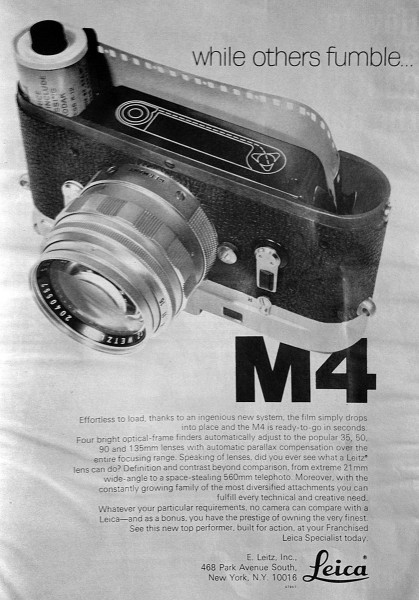
Next, film pushed my love of photographic and art history further and I started hunting for old cameras and learning more about how photography happened, even added a history segment into my workshops.
Back in 68 an ad in the 2nd Superbowl cost a mere $54,000. The Green Bay Packers won and Leica was running full page ads for it’s new M4. The Canon FTb was state of the art and now can be had on eBay for about $40. The Rolelli 35 was cool, but professionals were still using Hassies, Linhofs and others for their “serious” images.
At first I was uninterested in smaller formats. My original goal had been resolution and better wall prints. It’s true, I was starting to feel the romance of film. But one day I scanned a 35mm Kodachrome Slide I had found and realized how much resolution there was. It was arguably more than in today’s flagship DSLR’s. This lead me to the beautiful world of classic 35mm rangefinders. The stunning cameras that our new era of micro 4/3 and mirrorless cameras have copied. The thing is, these vintage rangefinders are made better, look cooler, cost less and generally have more resolution that their digital descendents.
But it’s not just cost and resolution. Along the way I realized how much film teaches. It demands that we slow down. It says ‘This frame will cost money” and with that you slow down, see and study your frame. This is further compounded with larger formats like 4×5. Where single frames cost dollars and take a quarter of an hour just to setup but produce breathtaking depth and detail due to the size of it’s surface.
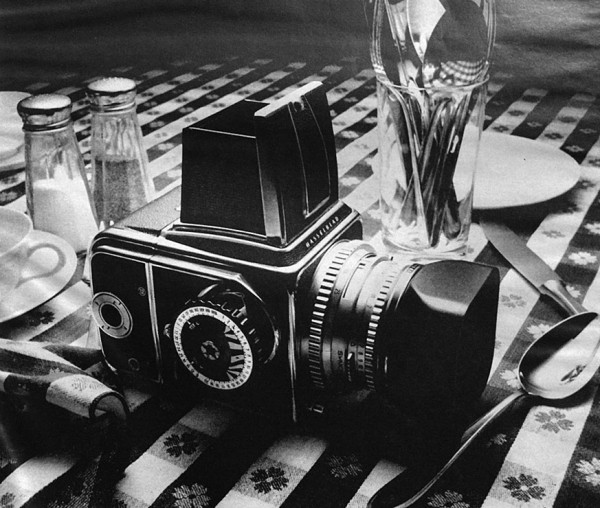
I started to realize why so many of today’s would-be photographers have not actually learned photography. It’s not a film or a digital camera that make you a photographer. The camera is just a box – But film forces you to think and digital does not. There’s nothing quite like the magic of pulling the film out of the can and seeing what was made. That anticipation of the moment that your effort pays off. Not using batteries, processors or sensors. Just a simple box and a piece of plastic and silver.
Martin Luther King was murdered that year in the summer Robert Kennedy followed him into eternity. Bonanza was #3 on TV and hippies roamed around looking strange and providing lots of opportunities for street photographers. It would still be a few years before the Nikon F2, but SLR’s were alive and well. Ansel would even make his stunning El Capitan, Winter Sunrise this year. But not on 35mm.
Some of my colleagues contend that the educational properties of film are overrated. That the high pace of digital is just fine and if you want to give it the teaching characteristics of film, just put tape over your screen. I find that those who say this have not used film in this digital era. It’s not that everyone will throw out their digital and go back to our roots. Digital is here to stay, but working with film will simply make you a better photographer.
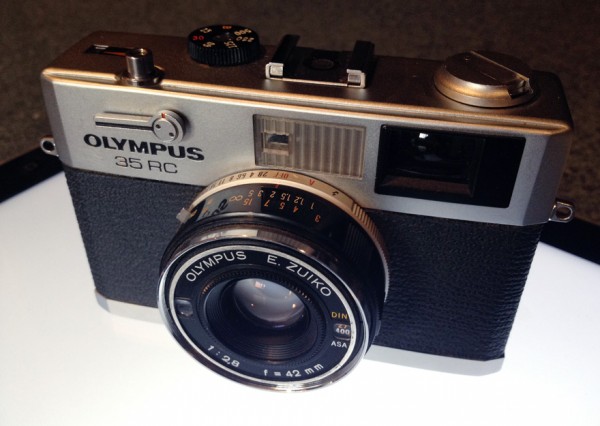
For causal images I’ve started leaving my Micro 4/3 at home and carrying a rangefinder like my Olympus 35RC. If I want a quick snapshot, I have a phone for that. If I pull out a serious camera, I’m hoping for a printable image. Why not exercise my skills?
Recently on a drive home I took a few image of local hills, smokey from summer fires in the area. I took only two frames and I found myself carefully planning each one, moving, thinking about what I wanted and how it would look. Visualizing and seeing tones. It’s not that I could not do that with digital. It’s that I probably would not have. Film does something to you. And then it changes how you use digital as well.
1968 ended and another year begin. Film was still getting better. The Apple computer was still nearly a decade away, but Neil Armstrong would land on the moon that summer leaving twelve Hassleblad’s on it’s surface. Woodstock would happen for the first time. Eddie Adams would win a Pulitzer for his iconic image and the Saturday Evening Post would send out it’s final issue. The Vietnam War was still on and the world was far from at peace. But in the world of photography, new tools came and new photographers studied how to master light and make the next cover of National Geographic.
So here I sit, pressing keys and watching characters that only exist as bits appear on a screen made of pixels. I load images from files on a solid state drive, think about the past and smile a little as I think my box of negatives. How an old camera is still such a functional, powerful tool. One that makes images that are just as good as those made by modern digital cameras. I wonder if in fifty years a late twenty-something like me will look back on the high tech gadgets of my day and think, wow that’s so cool – That was when life was simple.
The Bottom Line:
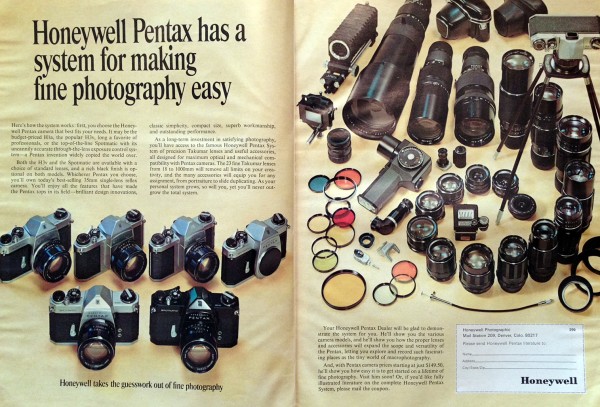
Film is coming back because it’s a new frontier that many have never explored. It’s valuable because it will help teach and or remind photographers that craft and quality are always important, no matter how advanced your gadgets become. But lets remember film does not make us cool. Using it well does. It will turn into a fad, but it’s how you use it that really counts.
Film is not poised to replace digital. The world is not throwing out their sensors in favor of silver. Film certainly won’t make your a photography any faster and it probably won’t make you more money. But it will make you a better photographer. It will help you appreciate and master light in new ways. Whether you work with the darkroom, or scan for digital process and marry your digital and film work as one, both will become better.
Film cameras are going up in value. For now you can pick up a great 35mm film rangefinder like my 35RC for under $100. A pack of film later and let that simple joy begin. A joy that you’ve probably never experienced with digital. Yes, it’s cheaper to learn on digital. To master the basic foundations of light without the heavy cost and slow feedback of film. I don’t deny the digital advantage in many other areas. Yet I think everyone should be using SOME film. Not for everything, but as an ongoing exercise. A change to that furious digital pace.
With film the world becomes more like slow motion. It helps you see things in your minds eye before you release the shutter. Starting in film is as easy as finding a vintage camera you like, picking up some film and setting to work. It may surprise you what you don’t yet know. Film is a way to get lots of detail, get back to basics and increase your knowledge at what photography is really about – Light.
For further study check out
- My Zone System Article.
- The EXposed series.
- PHOTOGRAPHICS the Film.
- Video, How I scan my images.
In closing here’s a few more of my own 4×5 pieces. Enjoy the light… Gav
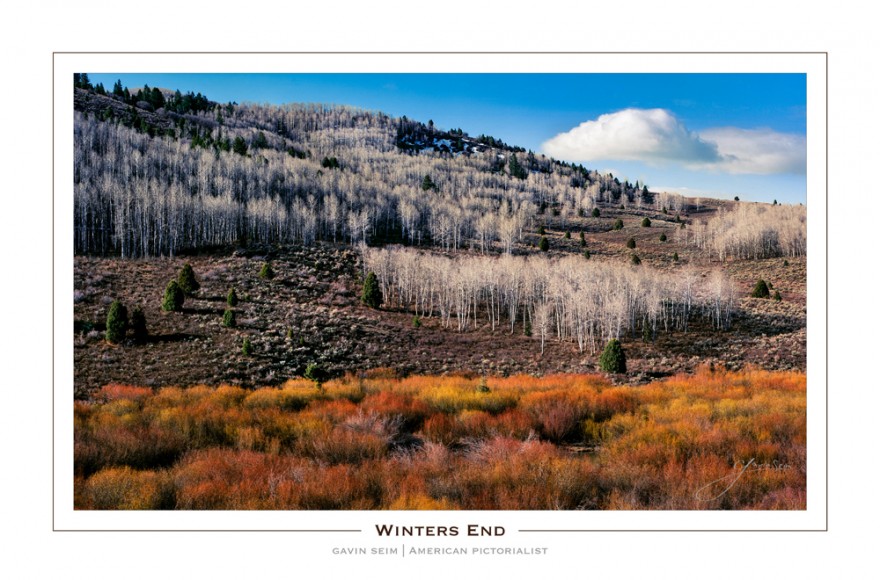
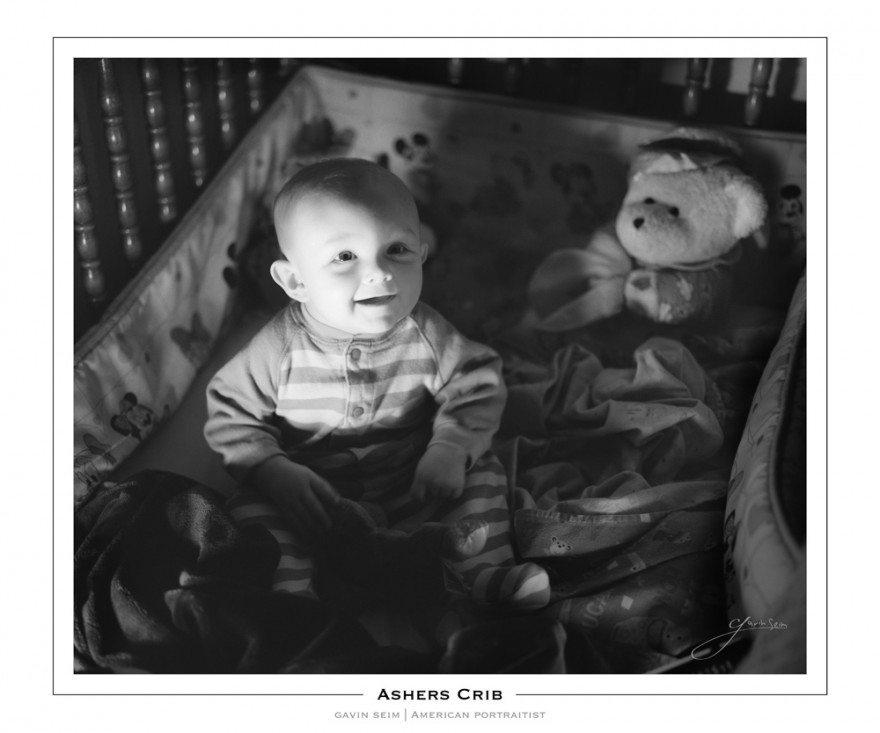

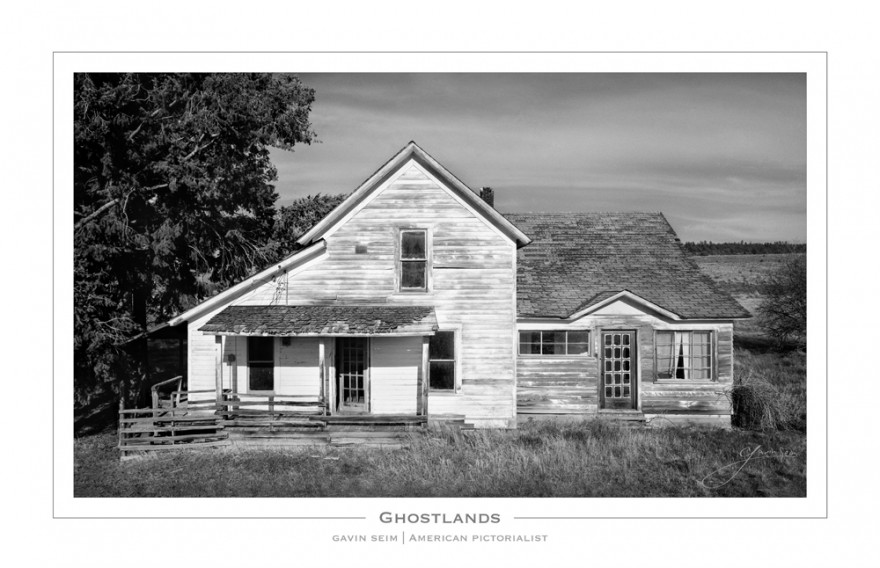
Very well said! Excellent.
nice post.
I’m looking to get back into film, (use to shoot film in the 70s and 80s) but not in a big way, looking for a good deal on an old Hasselblad and will develop and scan the b&w negatives.
I think time and money will prevent most from experiencing film in the digital age, which is a shame. We all have a lot to learn from those who had to make every shot count.
Awesome post gavin! I picked up an Olympus 35RC and immediately realized the potential for learning and slowing down during a night photowalk with a friend carrying only a tripod and my new rangefinder loaded with some Kodak 400CN I had lying around the house from a high school photography class. I started thinking about composition, hard light, and correct exposure more than just using shallow DOF to make my photos look cool. Thanks for the post and I look forward to the next update on your journey.